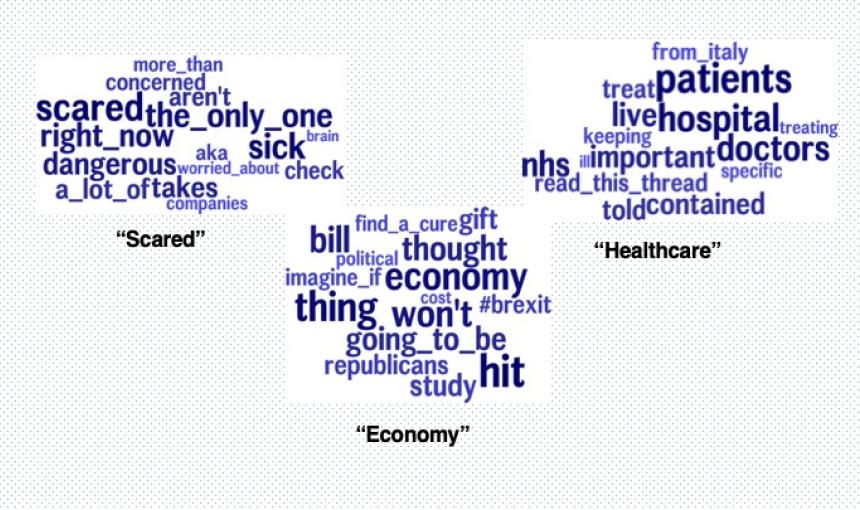Environmental Intelligence: Applications of AI to Climate Change, Sustainability, and Environmental Health

Tom Hauk/Unsplash
New data streams tracking our food, water, and climate could help us address the needs of the planet.
Over 900 Earth-observing satellites currently peer down at us from space. Simultaneously, an emerging network of ground-based sensor technologies track the movement of water, the sounds of ecosystems, and the chemicals that permeate Earth’s soils and atmosphere above it. This new generation of sensing technologies is attended by sophisticated physical models, from climate simulators to continental-scale hydrologic models.
These expansive new data streams and physical models present uncharted opportunities to use AI to address the needs of a planet on life support. Potential areas of inquiry might include the development of new climate solutions, land management practices, water security, environmental justice, prediction of air and groundwater pollution, preventing extinction, and optimizing nature for human health and well-being.
During a recent Stanford HAI workshop, I joined other Stanford faculty to discuss pressing environmental challenges ranging from biodiversity and conservation biology to water availability and sustainable communities. The group, which included computer scientists, mathematicians, hydrologists, marine biologists, political scientists, and mining engineers, focused on the concept of building a thriving planet for all species – not just one that is merely habitable.
We leveraged a human-centered design process to focus on how we might harness AI to uniquely address a range of stakeholder needs. Our objective was to develop an array of prototype projects that could lead to insights about future directions for AI in the environmental and sustainability realms.
Project prototypes included halting slavery in the seafood industry, intelligent tools for ensuring water and food security, and intelligent approaches for managing species migration.
We also identified themes that would be exciting to pursue through collaborative research: predicting, detecting, and mitigating or incentivizing environmental transitions; quantifying well-being and compatibility with one’s environment; environmental justice and human rights; and opening new data streams and achieving interoperability of existing data streams.
Current Status of AI for Environmental Contexts
Just like a driverless car must learn to sense and respond to multiple input streams to navigate safely through a city, environmental AI systems must learn to integrate complex socio-environmental data streams.
In the realm of sustainability management and decision making, applications of AI have been limited. Most work has relied on standard supervised learning methods to examine single dimensions of land use or climate risk and/or focused at scales (e.g., global) that extend beyond those where decisions are made (e.g., city/county/watershed). Although the use of indicators enables remotely sensed data streams to serve as proxies for factors other than land use and climate, to our knowledge very few studies have used mixed data streams, especially high-resolution local/human-centered data, due to the enormous mismatches between spatial and temporal character. Thus, there is an urgent need to develop methods that can learn from diverse data streams and to transfer that learning to actual community-based decision making.
The use of AI as a decision-support tool to guide sustainability efforts has also lagged behind applications in other areas. A substantial barrier to development of sustainable societies arises from the complexity of socio-economic-environmental systems, complexity that can surpass the ability for a human to understand all interactions and causations. A common approach to make sense of this complexity is to develop indexes, or collections of indicators. Although useful as a metric for evaluation, when applied as a tool for decision making, a strong reliance on indices can lead to unintended consequences because a static index cannot fully account for uncertainty associated with human behavior and community-driven priorities. Reliance on indices can also incentivize certain metrics with negative consequences for other components of the system and obscure the correlation among indicators. Most important, indexes can be influenced by deeply embedded social and cultural preferences and local political action. To address these limitations requires an intelligent system, human or machine, that can deeply understand multi-dimensional problems and solutions in complex socio-economic-environmental systems.
Workshop Approach and Outcomes
Stanford HAI’s workshop participants divided into small teams to identify interesting problems to solve. We considered what socio-economic systems AI solutions would rely on and how the potential solution might interact at different scales and across multiple systems. As part of the process, we identified novel data streams that might extend solutions in an effort to move beyond the current reliance on remote-sensing products. The prototype projects that emerged outline the potential for far-reaching collaborations that would uniquely blend the expertise of physical and social scientists with cutting-edge AI:
- Ending slavery in the seafood sector: How might we revolutionize the seafood supply chain using satellite tracking and digital data streams to identify ships carrying slaves?
- Smarter food transitions: How can we anticipate the environmental consequences of shifting food choices and use this to inform consumer decision making?
- Managing fresh water resources (quantity to quality) under uncertainty: How can we use AI and coupled human-environmental data to optimally allocate water resources under environmental, social, and economic constraints?
- A “selective membrane” for precision control of invasive species: Can we use interaction networks based on traits of species to prevent disruptive interactions of invasive species while allowing benign interactions to proceed?
- Community-centered environmental intelligence: How can communities seeking ways to address environmental concerns (from local groups to municipalities, districts, counties, state governments, and countries) develop workable solutions that honor the complex interactions between environment, social, and economic characteristics?
Potential Research Opportunities
During the course of the workshop, four overarching themes emerged that could be the focus of future research efforts. Three of the themes address topics that are particularly well poised to leverage AI to improve outcomes of environmental decision making or to protect human health and well-being. The fourth theme addresses the outstanding challenge of how to make use of diverse data sets with highly variable spatio-temporal characteristics, as well as the development of proxies, or indicators, of human or environmental health.
Predicting, detecting, and mitigating or incentivizing environmental transitions: Understanding past changes in environmental behavior and their consequences (e.g., land and water use, agricultural practices, pest management) can lead to both the early detection of big transitions and the seemingly small transitions with potentially big ripple effects. Early detection of changes could lead to prepared responses, mitigation of bad outcomes, or the ability to incentivize promising responses. Rapid development combined with climate change are pushing Earth’s systems to new states we have not seen before, presenting a philosophical barrier to predicting future outcomes based on prior conditions. Thus, both leveraging theoretical or physics-based models and quantifying uncertainty will be critical in determining the effectiveness of environmental intelligence (see also environmental justice and human rights below).
Quantifying well-being and compatibility with one’s environment: “Hairshirt” environmentalism, or the idea that a sustainable society should involve self-sacrifice, is often viewed as a barrier to promoting environmental transitions. Several of the projects focused on ways that we could harness AI to optimize human-environmental systems, including food and water systems. How can AI be used to develop a definition for environmental good that is flexible yet robust? How can AI be used to determine how people make environmental decisions?
Environmental justice and human rights: Vulnerable communities are often disproportionately subjected to the burdens of pollution and contamination. The impacts have traditionally been obscured by the limited data portraying the health of both humans and their environment. This is now changing with both the development of remote sensing techniques for air and water quality and the rapid expansion of ground-based sensor networks. As the example of slavery in the seafood sector demonstrates, human rights abuses can also be intimately coupled to the use of natural resources. Questions of environmental justice and human rights abuses exist throughout extractive industries (e.g., mining), agricultural sectors, and industrial environments. Addressing these problems requires a new set of tools that can track, for example, daylight patterns associated with issues such as human trafficking/slavery, illicit harvesting, and environmental degradation. By tracking the environmental footprint of activities and linking it meaningfully to human outcomes, AI could play an important role in the development, implementation, and enforcement of environmental laws, regulations, and policies.
Opening of new data streams and interoperability of existing data streams: Enormous mismatches between the spatial and temporal character of data streams challenges traditional approaches. The flexibility of AI to integrate environmental data sets is central to advancing the research agendas above. As a result, new insights may come from novel integration of nominally disparate data sets, particularly those involving human activities. In addition, the capacity to leverage physics-based models as data sources, including predictive models such as Earth System Models (climate and ecosystem simulators) and the National Water Model, may be folded into a next generation of decision-support tools. However, we are just in the early stages of exploring how to align environmental and human-centered data streams, including social media.
To remove ourselves from the constraints of the systems we study, our workshop participants considered the design of a new planet, called Xenia. What would we want to learn about the human-environmental systems on Earth before we unleash them on a new planet? How could we use this knowledge to design better systems for Xenia? As we consider radical investments to address sustainability and climate change, AI offers us the unprecedented ability to harvest knowledge from the experiments we are currently conducting on Earth’s systems to design new ones that are optimized for both humans and the environment. To lay the groundwork for this vision, we are excited to partner with HAI leadership and the other institutes at Stanford to host an expanded workshop featuring a mixture of domain experts from both the sustainability and AI sectors and to continue to foster the new collaborations required to build the groundwork for the visions and applications outlined above.
Katharine “Kate” Maher is an associate professor of Earth system science and senior fellow at the Stanford Woods Institute for the Environment.
Stanford HAI's mission is to advance AI research, education, policy and practice to improve the human condition. Learn more.


